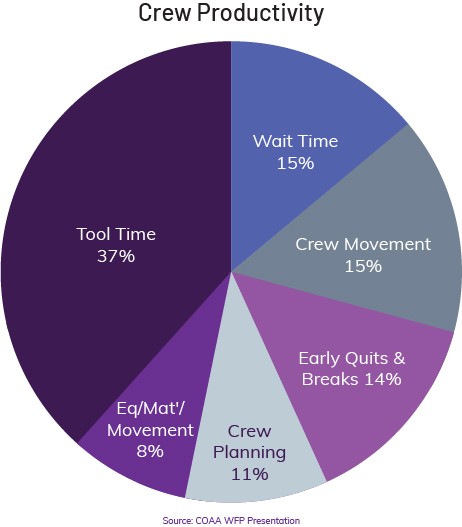Why is everybody talking about advanced work packaging?
Posted: April 8, 2020
Construction crews have earned the undeserved image of spending more time on their breaks than doing actual work. It turns out they’re not the ones to blame.
Ineffective upfront project planning and a lack of alignment between engineering, procurement and construction leaves the average construction worker spending less than 40% - that’s around three hours per eight hour workday – on productive tool-time, while the rest of their time is spent waiting for missing equipment or materials and coping with incomplete or out of date information.
And this is just part of the problem, inefficiencies lie throughout the entire project life-cycle, due to a lack of integration of processes and systems, ineffective communication between project teams, and constant changes and rework throughout.

The result? Eight out of 10 capital construction projects are delivered over budget and schedule.
Pile on the fact that the cost and complexity of projects are increasing, and it’s no wonder nearly everyone the construction industry is innovating to find new ways to optimise major capital expenditure programs.
Introducing: Advanced Work Packaging
Advanced Work Packaging (AWP), a methodology to improve CAPEX project execution, was originated by the Construction Owners Association of Alberta (COAA), which focuses on the improvement of capital project outcomes in complex industries – like the Canadian Oil Sands plants – and, shortly after, the concept was adopted as a best practise by the Construction Industry Institute (CII).
The AWP approach goes to the root cause of project overrun and overspend by defining the path of construction at the very beginning of the project and then optimising that plan through a clear, consistent and repeatable process. The AWP process aligns engineering, procurement and construction teams by approaching planning “with the end in mind” to create shorter, more integrated project phases, drive savings and efficiencies, and reduce project risk.
* Source: Construction Industry Institute (University of Texas at Austin).
The outcomes above clearly demonstrate why the approach has caught the interest of numerous leading industrial companies across the globe in the oil & gas, power and process industries, who have already begun implementing AWP programs on their latest projects.

AWP sounds great, how do I get started?
The industry agrees – AWP creates the potential to run safer, more efficient projects, improve predictability, and optimize cost and schedule outcomes. However, as a relatively new and complex approach to implement the first time around, the AWP implementation process varies from company to company, and project to project.
At the recent AVEVA World Conference in North America, Tedd Weitzman, Director of Delivery Excellence at Construct-X and Chair of the Fiatech committee at CII, shared his expert insights on how to embark on an AWP implementation. Watch the presentation to hear from Tedd and discover how AVEVA’s engineering and project execution solutions can help you implement AWP on your next CAPEX project.
Related Blog Posts
Stay in the know: Keep up to date on the latest happenings around the industry.